EASY SUSTAINABLE LIVING TIPS FOR BUDGET-CONSCIOUS PEOPLE
I’ve been asked different versions of this sustainable living question over the years, and I wanted to give solutions that you can save & share with others:
“I’m not in a great place financially so I constantly neglect making more environmentally friendly decisions because my perception is that it’s too expensive/unattainable. What are a few small things I can do that don’t require me to spend more money, but still make an impact?”
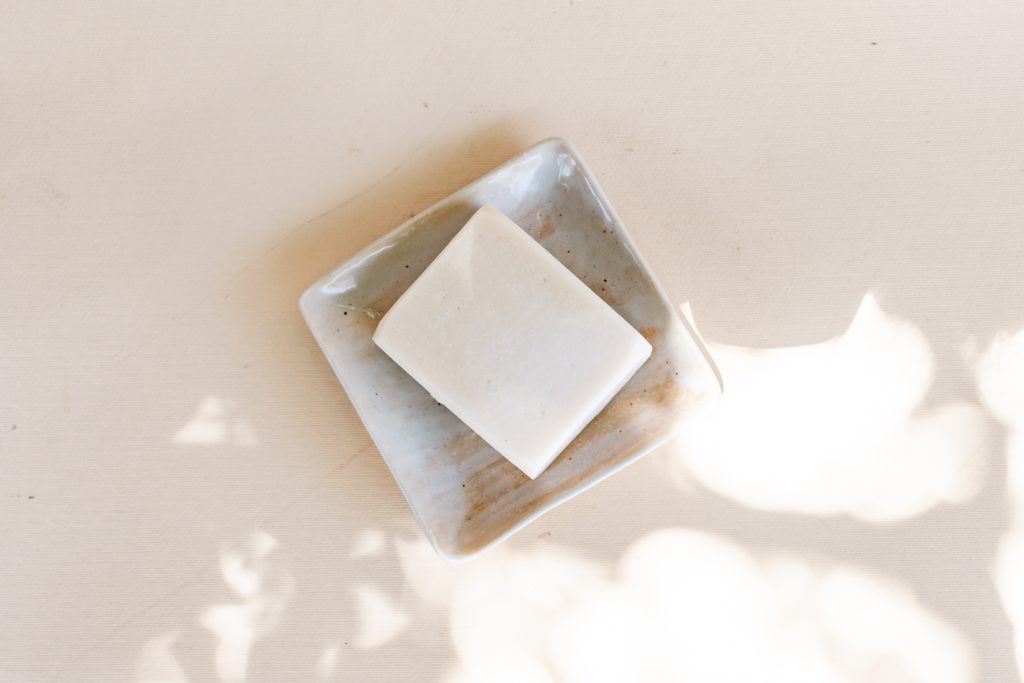
It’s a myth that sustainable living is only for the rich. Making environmentally conscious choices has been inaccurately stigmatized as an option only available to wealthy people.
Through my experience, it’s quite the opposite. Here’s why. . . Instead of thinking “what things do I need to buy?” think “what can I reduce?” The easiest way to cultivate a sustainable lifestyle is to reduce your consumption of toxic products, from brands with unethical business practices, and opt for products derived from the earth.
This shift in consumerism focuses on pairing down, so it doesn’t present a financial barrier to sustainable living. While some sustainable purchases initially cost more, you’re investing in something that lasts a much longer time.
In the long run, you actually save money. Sustainable living invites a long range vision for the future.
Here are some tips to support you in making simple-but-powerful shifts to sustainable living on a budget…
1. Ditch the bags and do this instead
Getting some fresh produce for that tasty salad or homemade stir fry? Forget the plastic produce bags and place the items in your cart. The cashiers don’t care that they’re not in a bag.
And if you’re worried about germs? Well, think about the journey those fruits or veggies took before getting on that shelf. They weren’t in bags for that. Just wash your veggies in an apple cider vinegar wash when you get home.
If you want a barrier for your produce, opt for a plastic-free alternative. Bring reusable cloth bags to transport your items home.
2. Make your coffee at home
How many times a week do you grab coffee on your way to work? Or a midday break? I used to get a coffee every morning! Now, I save over $20 a week just by making my coffee from home. Thats over $1,000 a year!
Avoid k-cups because they are nearly impossible to recycle and end up in our landfills and waterways. If you already have a Keurig, they make reusable k-cups!
If you do go out for coffee, bring your own mug and most places will discount your coffee.
3. Go paperless with your bills
Almost every single bill we have, can be paid online! For credit cards, you can download their app + pay from there. By opting out of paper bills sent through postal mail, you’re cutting down on an enormous amount of wasted paper and fuel expended getting it to you.
Use a scanner to digitize documents, only keeping paper copies of required originals. A cool perk of going paperless comes in the form of clarity.
When you reduce your home’s paper clutter, you create a more open space for creativity, relaxation and LIVING. You may be surprised by the relief you feel after eliminating those piles of anxiety-producing paperwork.
4. Switch from plastic toothbrushes to bamboo
There is barely any difference in price yet the impact is HUGE! One of the most common household items we find on beaches, and floating in our oceans, are fully in tact or broken down pieces of plastic toothbrushes.
These plastic pieces eventually turn into micro-plastics. Make the switch to a bamboo toothbrush! Read more about my low waste bathroom essentials here.
5. Buy in bulk
Unnecessary food packaging is one of the most common ways we welcome waste into our homes! To avoid this unnecessary plastic, take glass mason jars to the store with you and buy from the bulk section. You can make delicious dressings/sauces at home, in glass (so easy!).
Not only does this support sustainable living, but it tastes better and it’s healthier for you. If you’re gluten-free or dealing with food allergies, it takes the guess work out of meal planning.
6. Reuse or repurpose everything
Easily help the environment by avoiding purchasing new products whenever you can. Easier said than done, I know, but it’s not impossible.
You just have to get into the habit of reusing and repurposing things you already own; look at your wardrobe, home décor and furniture. Brainstorm ways to repurpose some of those items.
Before you buy anything new, take a look at what you already have. Chances are, you have something that could be used in a new way, or at least used temporarily to accomplish a task or goal.
If you must make a new purchase, try to only buy things with at least 2 uses from the same product and something that will last. For example, purchase a sustainable wood storage bin that doubles as a night side stand.
This kind of mindful consumerism makes sustainable living accessible to people from all financial paths.
7. Say goodbye to single-use plastic razors
Single-use plastic razors and expensive multiple use razors (what I used for years) are sadly ‘the norm’ for both men and women. When I found out that they are unable to be recycled because the mixed materials, I wanted to find an alternative.
I learned about a low waste, low impact alternative: all metal razors. There are one-blade safety razors and ones that have up to three blades with a pivoting head that is so close to your current shaving experience you won’t miss the plastic razor you have for a second. Watch this video or read about all of my low waste bathroom essentials to learn more.
8. Eat more plants
Or more importantly, eat less meat. The meat production industry creates nearly one-fifth of all man-made green house gases and is the largest source of pollution. If you want to significantly reduce your negative environmental impact, switch to a more plant-based diet and cut out meat that’s factory farmed.
If meat-eaters are rolling your eyes, at least consider this: shift to eating locally raised meat so that you’re not supporting the factory farm businesses.
The industrial meat industry is not sustainable because of the sheer volume of it – we are eating more meat than we as a society ever have (larger portion sizes, more often) and the astronomical amount of cows is what is producing this mass amount of greenhouse gases.
Over the past few years, I have shifted to a ‘climatarian diet’ which means we are mindful of where our food comes from and the impact on our planet. We eat primarily plant forward, participate in a CSA and support local, regenerative farms whenever possible.
Perk alert: Eating less meat is CHEAPER.
9. Eat locally, in-season and at home
Looking to save money, the environment and your health this year? Make a point to eat locally-grown, in-season food, at home.
Buying local groceries might sound expensive but it’s certainly cheaper than your twice-a-week takeout habit.
Not sure what’s in season? Look into joining a CSA, buy frozen out-of-season foods (or better yet, freeze your own while they’re in season) and learn more about seasonal eating here.
Also, here’s a great resource on zero waste grocery shopping.
No time to cook or don’t know how? Try investing in a slow cooker or searching for easy meals – Pinterest is a great resource. Local farmer’s markets and local CSAs/co-ops supply an abundance of fresh, locally sourced food and you’re supporting local growers in the process. A total win-win.
10. Stop wasting so much food
Speaking of saving money on food, another easy way to reduce food costs, and be less wasteful, is to purchase and consume less food to begin with.
According to a report from the National Resources Defense Council, 40% of food produced in the United States is never eaten; instead, it takes up more space in landfills each passing year.
Because of inefficiencies in the way food is produced and shipped, this isn’t all our fault. However, we can do our part by using and wasting less food in our homes and at work. Creating and using a basic meal plan helps avoid making unnecessary food purchases, as does learning to freeze and reheat leftovers.
Another option: Cooking smaller portions of your favorite foods. You may end up cooking more often, but it can lead to savings and a lot less waste over the long haul.
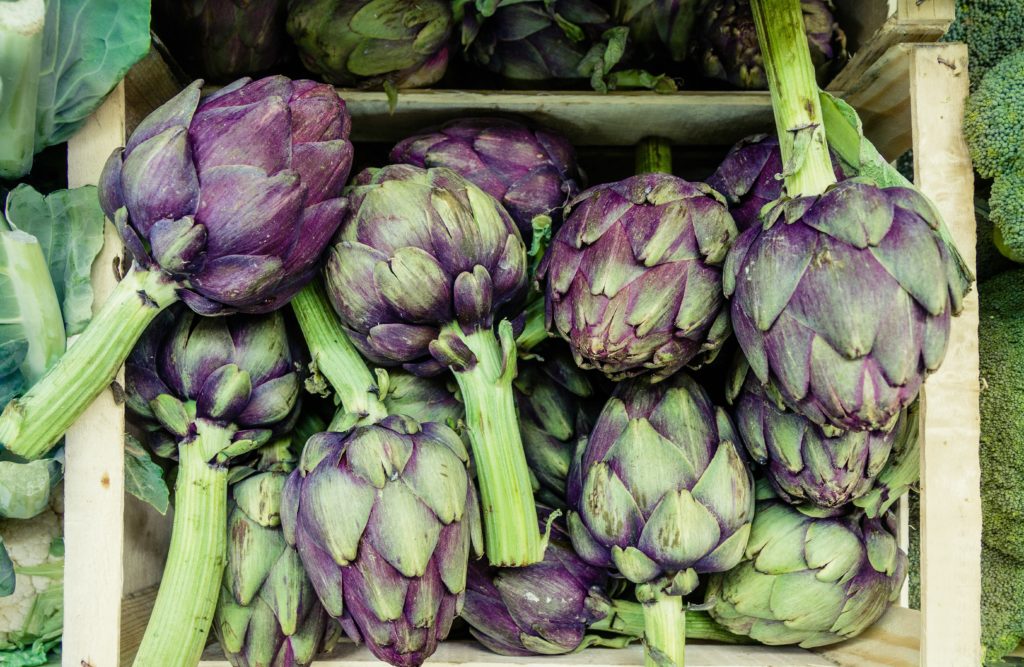
11. Switch from plastic bottles to one reusable bottle
Although plastic water bottles might seem like a cheap buy at first glance, small purchases add up, and a reusable water bottle is a one-time purchase which saves you money and protects our planet. Not only will you cut down on plastic waste, but you also save a ton of cash in the process.
A 20-ounce bottle of water can cost up to $1.50 at a grocery store or gas station, but tap water from a drinking fountain is free — and is often held to a higher standard than bottled water. Fill up your bottle over and over, and pocket the savings. No one will know the difference but you and your wallet. This little shift is a perfect example of a small sustainable living step that creates a big payoff over time.
Here’s more info on the toxicity of water in plastic bottles & what we use when to cleanse water in 60 seconds while traveling.
12. Swap plastic hangers & baskets for wood
Along with plastic toothbrushes, plastic hangers and plastic laundry baskets are among the most common debris washing up from our oceans. Don’t throw out what you have and buy new – always use what you have.
I’m just advising you to stop buying new plastic hangers, and choose used options, wood alternatives or to fold your clothing instead. If you opt for wood or wicker hangers and baskets, you can probably find a cheap score at most secondhand stores!
13. Make a change in your laundry room
Swap out toxic laundry soap in plastic jugs for inexpensive DIY laundry soap, or use something like this laundry soap in a glass container. Another alternative are Dropps which are non-toxic pods that come with no plastic packaging!
Pass up the potentially toxic fabric softeners, and use wool dryer balls instead. Wool dryer balls are reusable, frugal and contribute no plastic waste or ground water supply contamination.
14. Stop purchasing toxic cleaning supplies
The typical household cleaners that are on grocery shelves are toxic, not to mention wasteful. You can make yours at home for a fraction of the cost and with much less waste.
Homemade cleaning supplies are mostly made up of cheap ingredients people already have in their homes like vinegar, baking soda and lemon juice. Also, when you make them at home with natural ingredients or from a concentrated non-toxic cleaner like this, you can reuse the same glass spray bottles and quit constantly adding the plastic spray bottles to landfill.
This is one of the first things I changed when eliminating toxins from my life. If you want to save money while also avoiding harmful chemicals and reducing your waste: make your own inexpensive and easy household cleaners!If you’re really not the DIY type, opt for something that comes in glass or a cardboard carton.
15. Stop Sucking (Plastic Straws)
Most people are like “what’s the big deal with the straws all of a sudden?!” While I understand that it seems like a tiny little piece of plastic, it adds up. 500 MILLION straws are used every single day.
This would fill over 125 school buses with straws every day. That’s 46,400 school buses per year! (via nps) And because they are small, they aren’t easily recycled, meaning they’re thrown into landfills, and often end up in our oceans.
This illustrates single use plastic at it’s finest – absolute WASTE.
So, what can you do to reduce this type of waste as part of your sustainable living journey? Don’t buy plastic straws for your parties, or your home. ASK for your drink without a straw at restaurants and bars.
If you feel like you can’t ditch straws all together, keep a stainless steel or bamboo straw in your bag!
16. Ditch your single-use period products
Want to know something shocking? We toss close to 20 billion tampons, pads and applicators into North American landfills every year! Mindblowing. Have you ever thought about the waste we create during our periods? Boxes with plastic windows, instructions (that we don’t need), plastic wrapping, plastic applicator, then the tampon itself . When wrapped in plastic bags from bathroom trash cans, period waste can take centuries to biodegrade!
The average woman uses over 11,000 tampons over their lifetime, leaving behind residue far beyond their lifespan. Also, the scary reality is that not only are the applicators plastic but nowadays, most pads and tampons are made with synthetic (read: plastic) fibers.
My solution? A menstrual cup. With no risk of TSS, this comfortable alternative is the most amazing, badass, money saving solution to the mass amounts of period waste.
This isn’t a one size fits all solution but the exciting thing is that there are multiple alternatives to single-use plastic period products. I dive into this deeper in this post sharing multiple sustainable period products.
17. Recycle your contact lenses
This is something I know many people don’t think about at all! Here’s how.
18. Make a swap for cloth
Use cloth napkins – when did we completely switch over to paper towels? They are a total waste. Over the past three years, we have started keeping flour sack cloths in our kitchen and barely ever use paper towels. Cuts down on monthly costs and cuts down on your waste.
19. Consider your transportation
What does your morning commute look like? Could you carpool, walk or ride your bike? If not, make sure that you trip chain: combine errands when driving is necessary. By taking one big trip to pick up groceries, drugstore items and dry cleaning instead of making each a separate venture is one easy way to cut down on gas emissions.
Not only does this sustainable living tip nurture our planet, but it helps you reduce stressful moments of traffic and can get you into better shape!
I touch on this a bit in my post about reducing your environmental impact while traveling if you want to learn more.
20. Compost
Organic compost provides the absolute BEST soil conditioner and fertilizer and nearly eliminates all of your food waste. I used to be overwhelmed by the whole concept until I spoke to a woman who has been growing her own food in her backyard for years. She said:
“IF IT COMES FROM THE EARTH, PUT IT BACK IN THE EARTH.
SIMPLE AS THAT.” – Nancy Redfeather
It’s easy peasy to do. We keep a small little metal bin in our home and fill it will all of our food scraps besides any meat that we may eat. We fill it will fruit + vegetable skins and scraps as well as coffee grounds, eggs, etc. Don’t add newspaper or anything like some say to do. Just keep in mind: if it comes from the earth, put it back to the earth.
Your compost bin will most likely live out in your yard. Sit your compost bin on the ground, in an easily accessible spot. You can buy a ready to use compost bin, or make your own DIY compost bin. This is the only cost associated with compost.
Put about 4 inches of sticks and brown waste (leaves, etc) at the bottom of your bin. Depending on your climate, you may have to add water from time time, keeping the materials moist, but not super soggy. Here in Hawai’i the humidity take care of this. As you add green waste (food scraps) and brown waste (leaves + lawn clippings), turn the material now and then. When you no longer recognize the original “ingredients” and see dark soil, your compost is ready to use! It’s amazing for gardens.
If you live in an apartment or in a city, here’s some info on how you can compost too!
Recycling your organic waste is an important part of a sustainable living plan. Plus, it promotes soil microbes that aid plant growth, giving hope to nutrient depleted soil. Our earth deserves all the nurturing TLC we can give it!
21. Purchase items that last & buy secondhand
When it’s not possible to reuse or repurpose what you already have, take a look at used items before you buy new. Not only will you save money, but you can also avoid the heavy packaging that comes with most new products, the energy it took to create and ship those products and your time and fuel spent trucking around from store to store during the shopping process.
Additionally, older items are far less likely to off-gas VOCs (Volatile Organic Compounds), which cause poor home air quality. VOCs can cause a host of health issues ranging from headaches to asthma.
Whether you’re buying clothes, tools or items for your outdoor space, you might find exactly what you’re looking for at neighborhood garage sales, or on websites like Freecycle, Craiglist, ThredUP or Poshmark – but at a fraction of the cost.
22. Grow your own food
You can drastically reduce the shipping and energy used to move fresh fruits and vegetables by growing your own. Even if you start small, it makes a positive impact.
If your family eats a lot of something — for example, tomatoes — you may want to consider a small container garden for that specific item. Or imagine all the plastic waste you’ll save if you don’t purchase herbs from the store every time you need them.
Either way, a garden can pay off handsomely, once you absorb the start-up costs and begin harvesting your own fresh produce. For tips on gardening on a budget, check out this post about reducing the startup costs of a food garden.
23. VOTE!
Although I think we have a lot of impact as consumers, how organizations and businesses are allowed to run (as well as environmental policy controlled by the government) have a HUGE impact on our environment.
Sadly, 71% of all emissions come from large corporations so it’s easy to wonder how does individual action matter at all? Well, the fact of the matter is policy and businesses reflect the will of the people.
It’s simple supply and demand. If we demand sustainable business practives, products that are environmentally conscious and not harmful to us or the earth we reside on, there will be a supply.
Most people don’t even know that there’s a problem or that what they’re doing is connected to it. We have to continue with individual action to spread the message far and wide, mobilize and push for that change.
Tuning in and paying attention to what’s going on gives us the ability to use our voices, and exercise our right to vote for outcomes that are environmentally conscious. This costs no money and is essential to facilitating positive change.











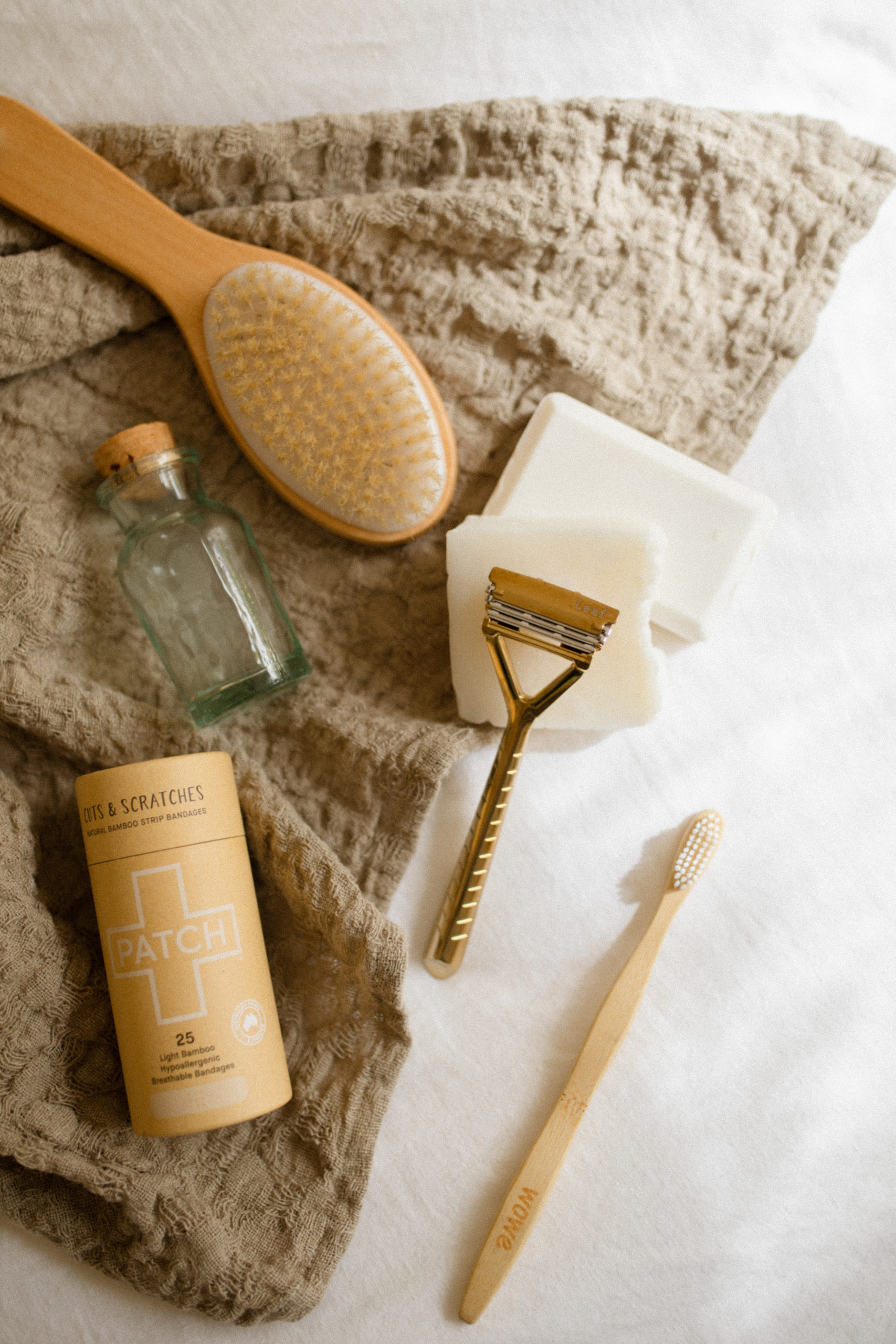

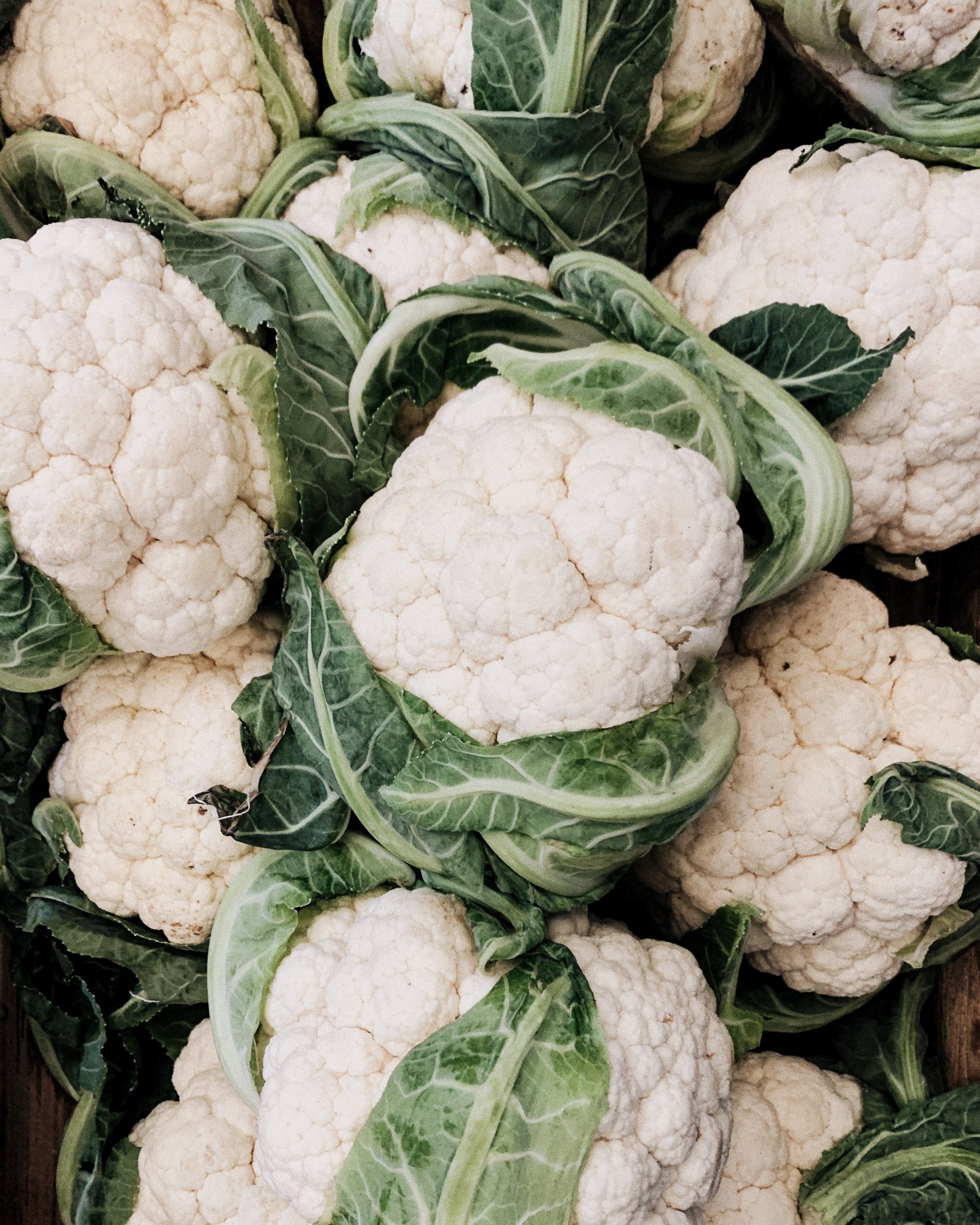

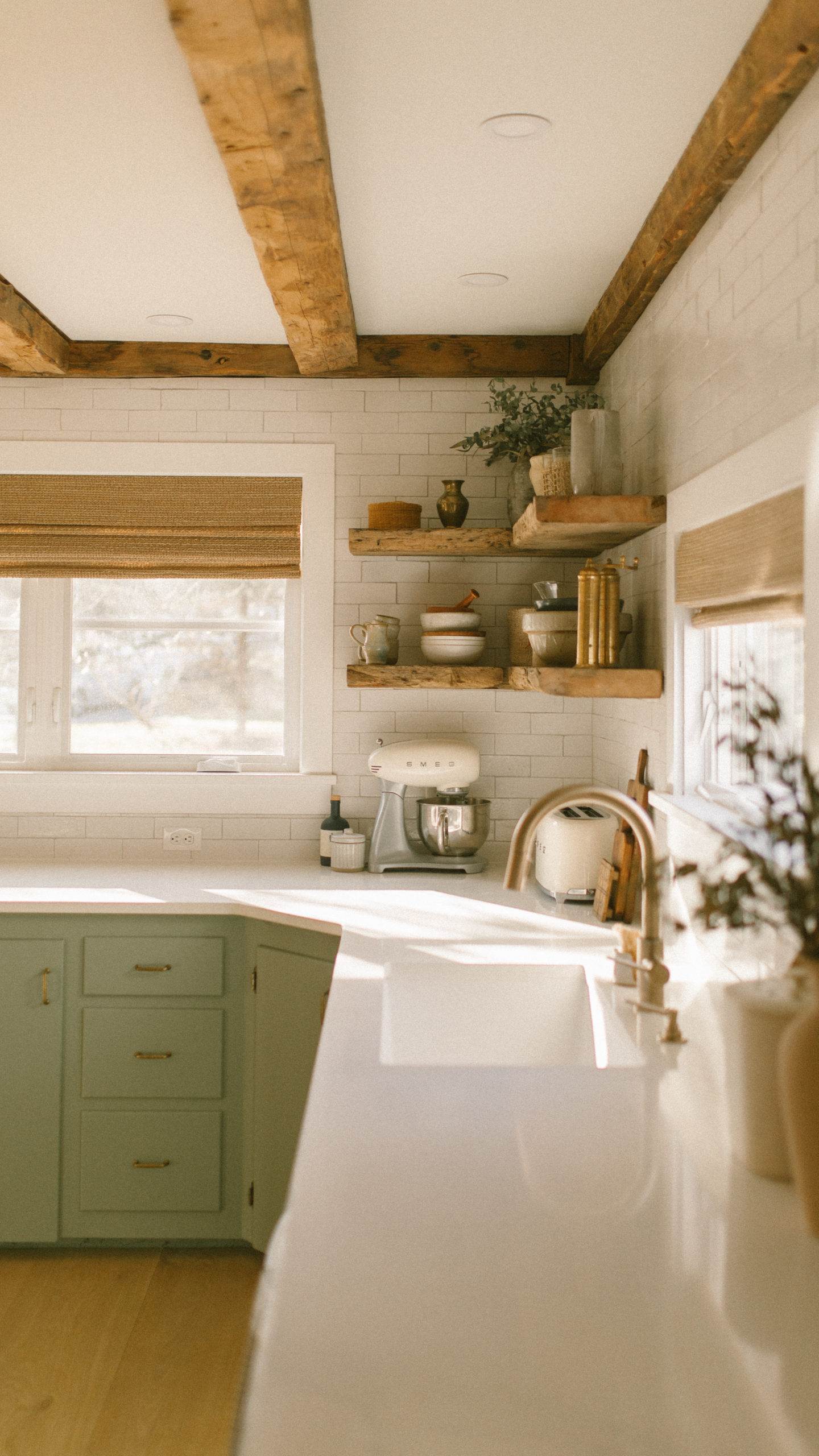



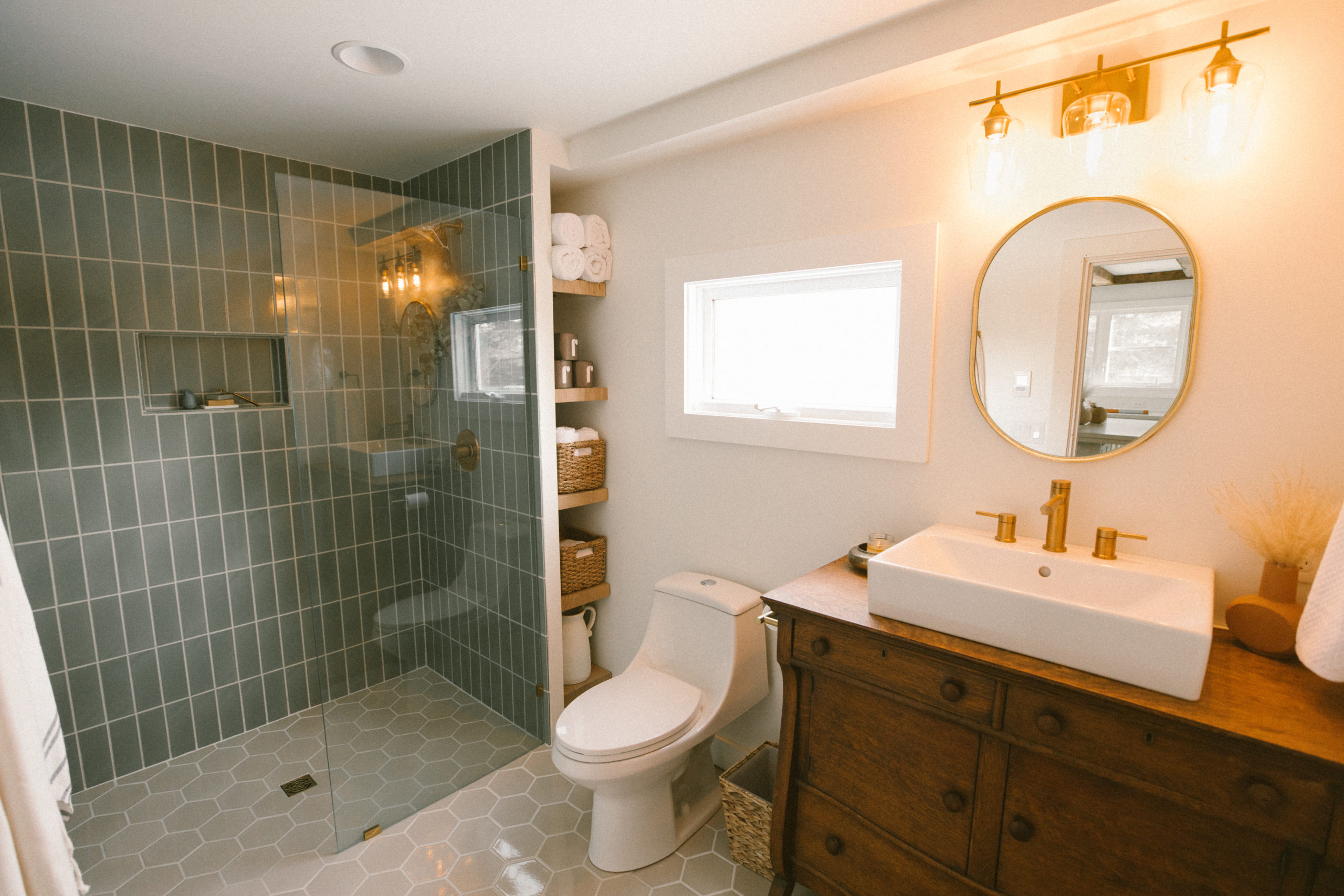
THANK YOU for creating this post. I was just thinking (while in the shower) the other day that I needed to write a post sharing what little things we’ve changed in our lives and household to be conscious of sustainability and doing good by our planet. I’m going to digest this whole list and continue to see what small changes we can continue to do.
I recently committed to no longer purchasing zip-lock type bags and invested in a handful of eco-friendly reusable bags that will take their place. No more wasteful tossing of plastic bags in the trash. We have been doing the straw thing in our home for years, but also just committed to stop of use of plastic wrap and now use reusable waxed cotton food wraps. It even dawned me the other day, because I have to use daily contacts (i.e. a new pair every single day) that I was throwing a tiny plastic container in the trash every day. It killed me when I realized this. So now I have a small recycling container next t my counter where I put them every day, but I didn’t know I could be recycling my actual contact lenses too!!
So yes, what I’m trying to say is you’ve really inspired me to continue to make efforts to live a more sustainable life on the daily. Thank you friend!
LOVE this post!! So many great ideas, some I had never thought about before! Thank you for sharing! <3